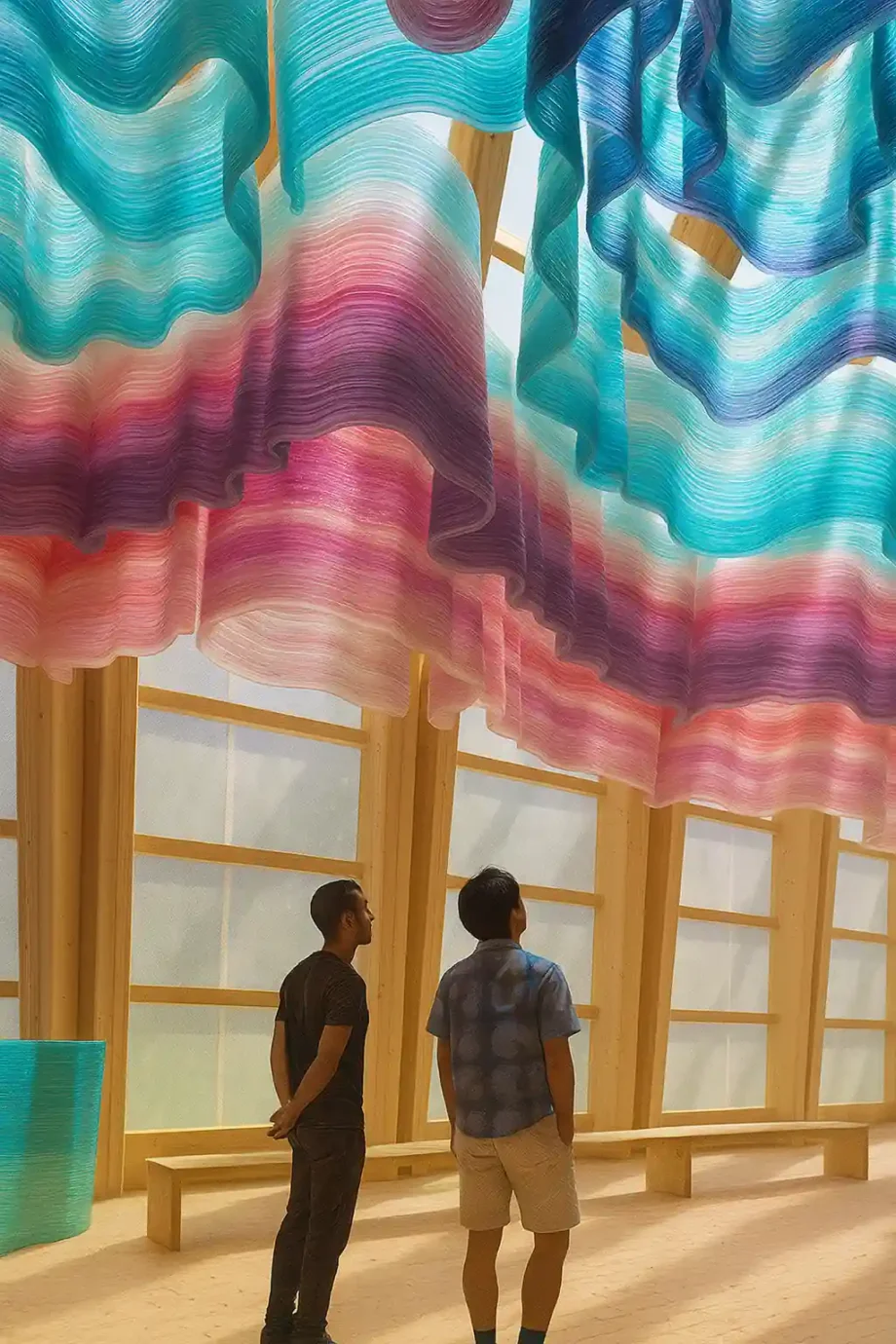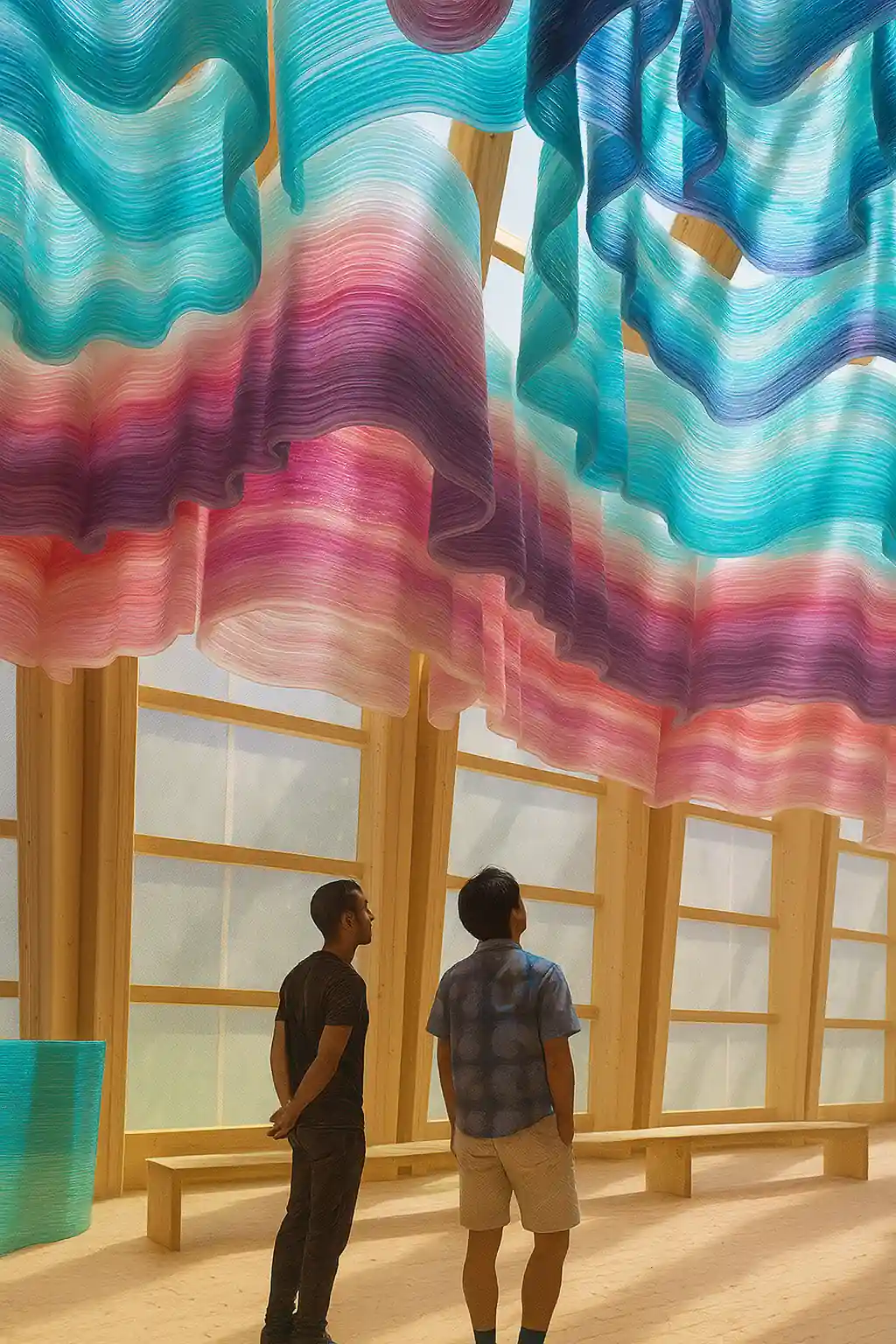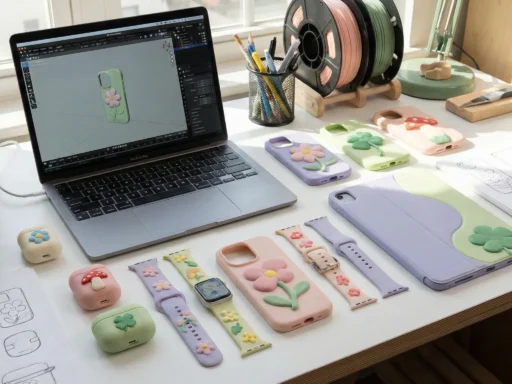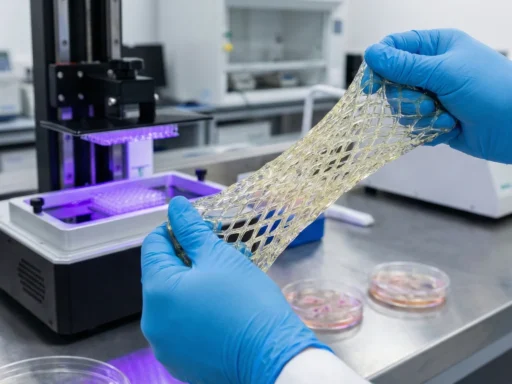In the Swiss village of Mulegns, ETH Zurich and Nova Fundaziun Origen have just unveiled Gelateria – a 3D printed ice cream shop and architectural prototype. Located not far from the White Tower completed earlier this year, the project aligns with the mission to use next-gen experimental design as a tool to revitalize the region.
Designed by students in the Master of Advanced Studies in Architecture and Digital Fabrication (MAS ETH DFAB) program at ETH Zurich, the Gelateria blends conventional building techniques and digital innovation. The exterior is a nostalgic reference to the form of the barn that previously occupied the site, made of pre-fabricated, locally sourced timber. A translucent membrane encloses the structure, letting natural light filter in.
Inside, the central feature is a vibrant, vaulted cupola created using Hollow-Core extrusion, an experimental 3D-printing method. Originally intended for façade panels, the technique was adapted to create a lightweight enclosure covering over 250 square meters while weighing less than one metric ton.
“We wanted to show how recycled materials and robotic processes can work together to create architecture that is both expressive and sustainable,” Professor Matthias Kohler of ETH Zurich told Designboom.
The cupola is made from PETG, a thermoplastic widely used in food packaging, showcasing post-consumer materials in completely new roles in design. Both the timber and printed elements are fully reusable.
“This project is part of a larger cultural initiative to bring new life to Mulegns,” said Giovanni Netzer, founder of Origen. “It shows how contemporary construction methods can support local identity.”
Paired with the White Tower, the Gelateria embodies a new concept of architectural intervention: small in scale, brave in vision.






